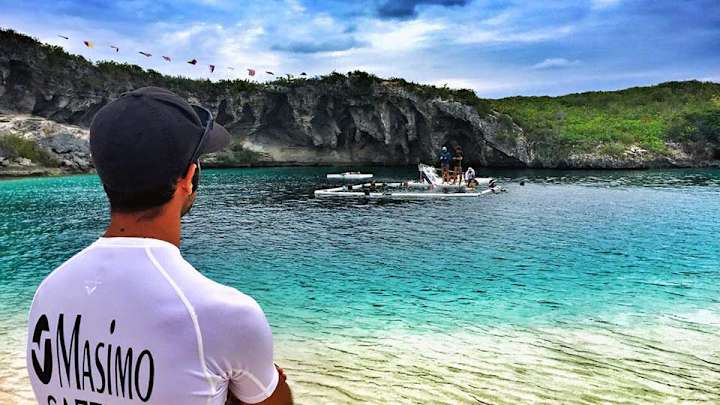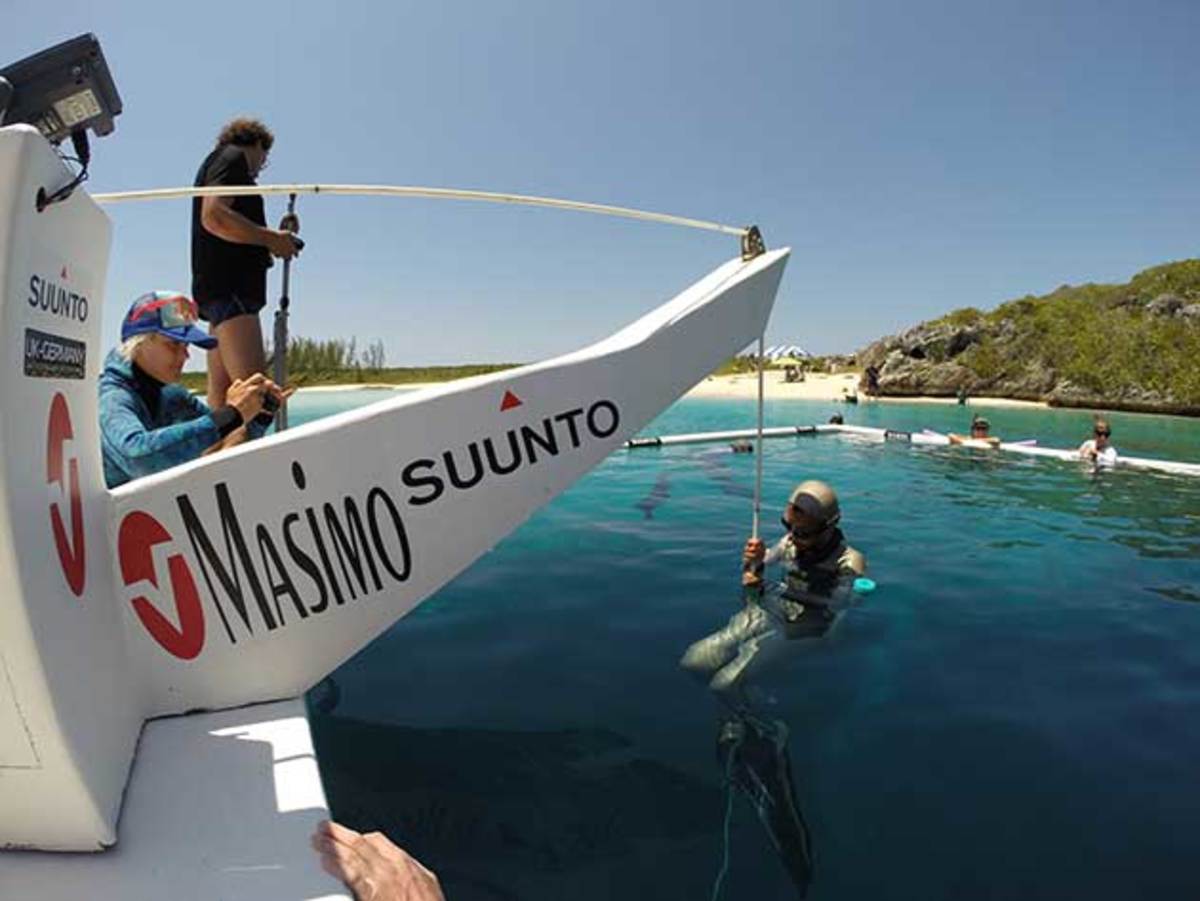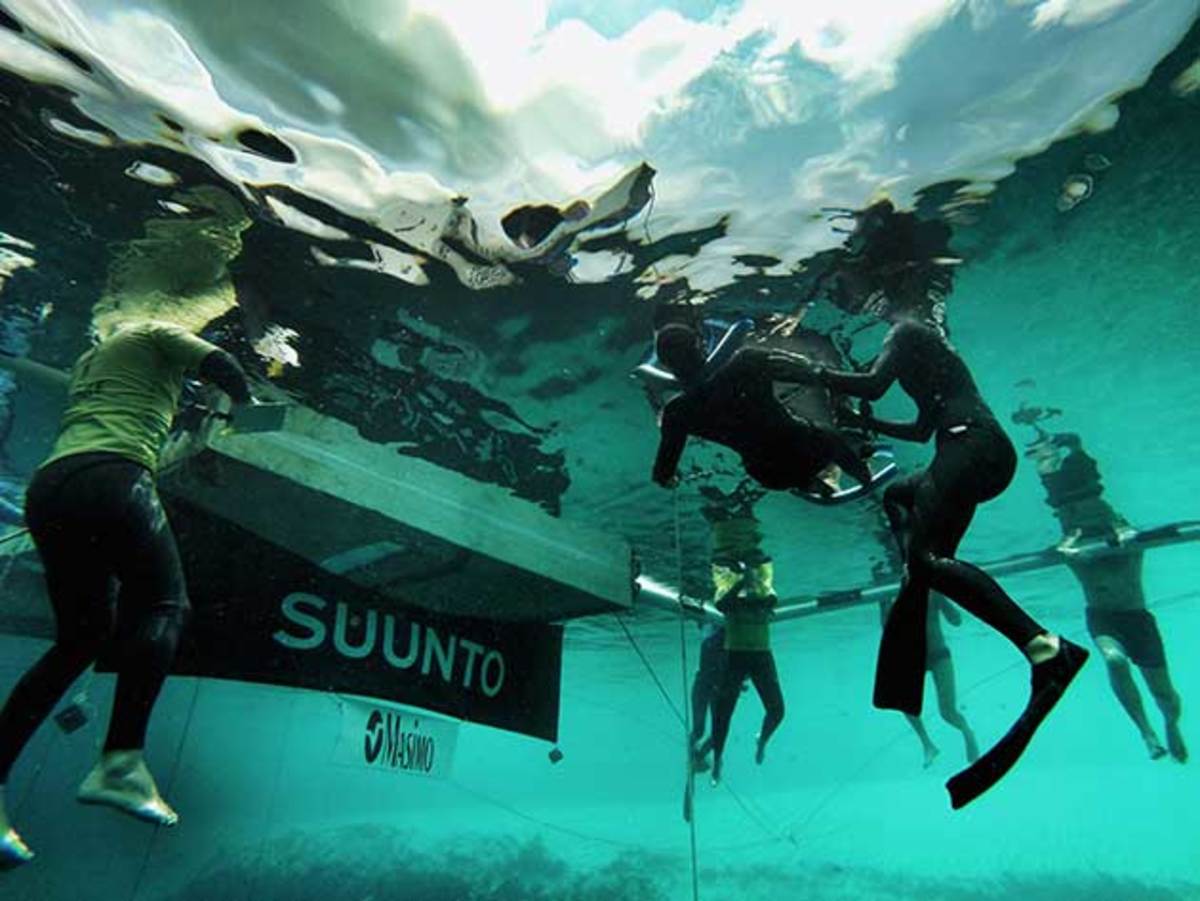Stig Severinsen seeking to make the dangerous game of freediving safer

Free diver Stig Severinsen doesn’t want to lose anyone else. “I lost my best friend three years ago,” he says. Alex Lorente drowned in the Mediterranean Sea off the northeast coast of Spain while teaching students SCUBA in August 2012. At the end of the day’s training session he had gone out alone, searching for a lost fin, and never came back.
Then in November 2013, Nick Mevoli died while trying to set an American record at the Vertical Blue competition in the Bahamas. While Lorente’s death affected Severinsen deeply, Mevoli’s death finally woke up the wider free diving community and started a push to reduce risk. And earlier this month, Severinsen traveled to the Vertical Blue competition armed with a handful of MightySat pulse oximeters to try to find a way to make his sport safer.
In 2013, Mevoli had been attempting to reach a depth of 72 meters (236 feet) underwater on a single breath, dragging himself hand-over-hand down a rope, without using fins. A few meters short of his target he’d paused, as if something might be wrong, then pushed on. But when he returned to the surface he passed out. Blood poured from his mouth. His pulse faltered. The safety team tried to revive him, but his heartbeat faded, and stopped.
Rowing Wild: Sonya Baumstein's epic solo voyage across the Pacific Ocean
According to Severinsen, Lorente’s death was a freak accident. He was a biologist and conservationist. He didn’t free dive to set records, he wasn’t someone who pushed limits; he just loved the sea. But Mevoli’s death was different. Before that record attempt he “was spitting blood, and coughing blood, and pushing way too much day after day.”
“People told him to relax … but he was pushing it too much.”
As a breath-hold diver descends, the increasing pressure of the water compresses their lungs in what is called a thoracic squeeze. If the lung cavity is compressed beyond its residual volume—the normal volume of the lungs when a person completely exhales—then pulmonary capillaries can rupture and leak blood into the breathing space. A diver injured in this way may feel as if he or she has chest congestion, coughing up the fluid to clear it. In a worst-case scenario the lung can collapse entirely, and the diver will be unable to breathe.
Lorente and Mevoli aren’t the only free divers to have drowned in recent years. Audrey Mestre died in the Dominican Republic in 2002 while trying to reach 171 meters (561 feet) using a weighted sled. Loïc Leferme died training off the coast of France in 2007. Adel Abu Haliqa disappeared during a 70-meter (230 feet) attempt in Greece in 2011. Patrick Musimu died training alone in a pool in Brussels the same year. All were expert free divers.

After losing Lorente, whom he describes as his soul brother, Severinsen was determined to act. He created a general water safety program called Ultimate Surf Survival, designed for anyone who uses the water as their playground. After big wave surfer Greg Long almost drowned in a five-wave hold-down at Cortes Bank in 2012 he sought out Severinsen for help.
But, according to Severinsen, the pressure of competitive free diving, of pushing to the limits of human physiology and trying to set new records, means that divers still take risks. “I’m not an angel or saying I’m a saint or anything,” Severinsen says. “We’ve all pushed too far too many times and we’ve just been lucky.” The irony is that the most experienced free divers are perhaps those most likely to drown.
“I’ve been spitting blood, I’ve been diving too many days in a row with too little rest,” he says, “but you get to the Red Sea, Hawaii, you pay thousands of dollars to go, and then you just have to train, train, train because you have to adapt to the depth. It takes days or weeks to adapt to the depth, but if you only have six days and you have the world championship … you just try to push too much.”
And no one wants to lose out on that chance to set a new record because of a little blood. Lung damage is as much a part of competitive free diving as concussions are in football. If you want to play the game, you have to accept that you’re going to get hit. You just hope that the injuries are minor, and that no lasting damage is done. And you learn not to tell your coaches, to hide the fact you’re feeling a little dazed. No one wants to be sidelined from the Super Bowl because of a little headache. So expert free divers chasing records might tell doctors they feel fine, or take shallow breaths to hide the bubbling sounds.

But numbers don’t lie. Severinsen and medical technology company Masimo were at Vertical Blue conducting research on competitors using the MightySat pulse oximeter. With this, Severinsen, who also has a Ph.D. in medicine, can measure a diver’s blood oxygen saturation. In healthy individuals that number should be somewhere between 95 and 100%, but if something, such as fluid in the lungs, is preventing the transfer of oxygen into the bloodstream, the value will drop. Severinsen’s ultimate aim is to produce a safety protocol that will help identify which divers need to be forced to rest and recover.
“I’m a free spirit,” Severinsen says. “I’m all about free will, free limits, free dreams—but I’m absolutely about safety and using all the devices and all the knowledge and experience we have.”
“We still love our sport, we have to push the envelope. We have to challenge at the boundaries of mankind,” he explains, “but we also have to focus on safety.”
The MightySat clips onto the end of a person’s finger, and works like most other pulse oximeters found in hospitals. It shines different wavelengths of light through the skin, measuring both the pulse and the blood oxygen saturation by the amount and type of light absorbed—red blood cells carrying oxygen are bright in color, and those without oxygen are dark. And because the MightySat is both water resistant and transmits data wirelessly to mobile devices, it is well suited to sports applications. Severinsen set up the devices in a tent on the beach nearby so that divers could test their blood oxygen saturation immediately before and after each dive.
Masimo’s device can also determine the perfusion index and pleth variability index, which are measures of the pulse strength and pulse strength variability, respectively. A free diver’s body shunts blood away from the extremities to conserve oxygen and due to the cold, and these additional pieces of data could help build a better understanding of the physiological changes breath-hold divers go through.
Severinsen sees another side to using pulse oximeters, too. Beyond safety protocols, the MightySat could also be used to improve performance. By looking at the data during training, divers could learn how to extend their dive time, how to stay calm and focus better, and thus reduce their body’s draw on its limited oxygen supplies.
“It’s a more scientific, more professional approach,” he says. "Pro athletes would do this.”
